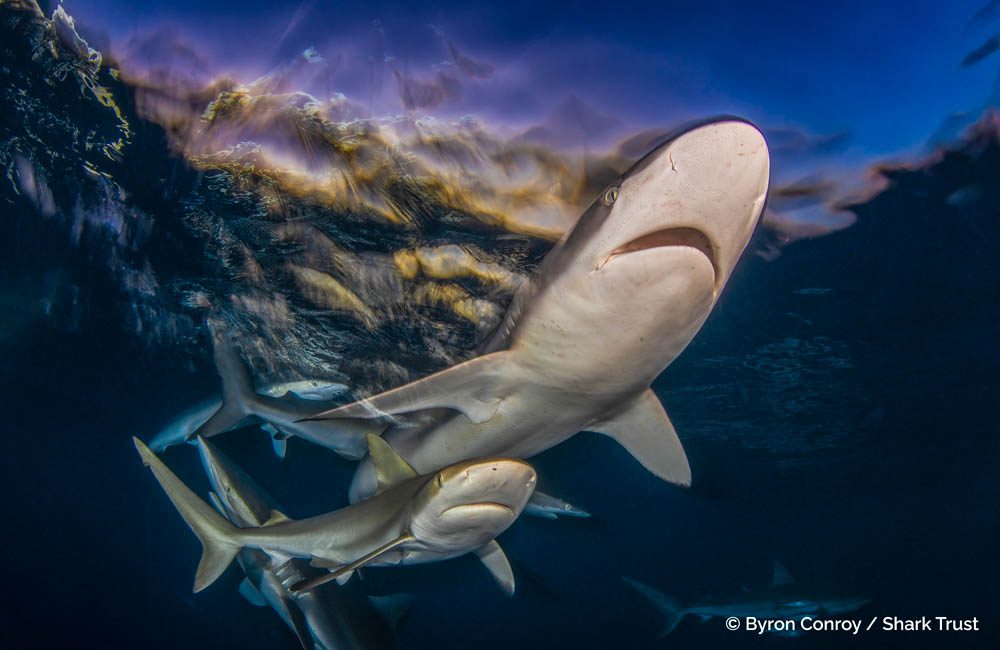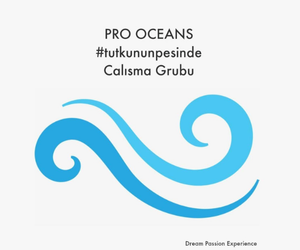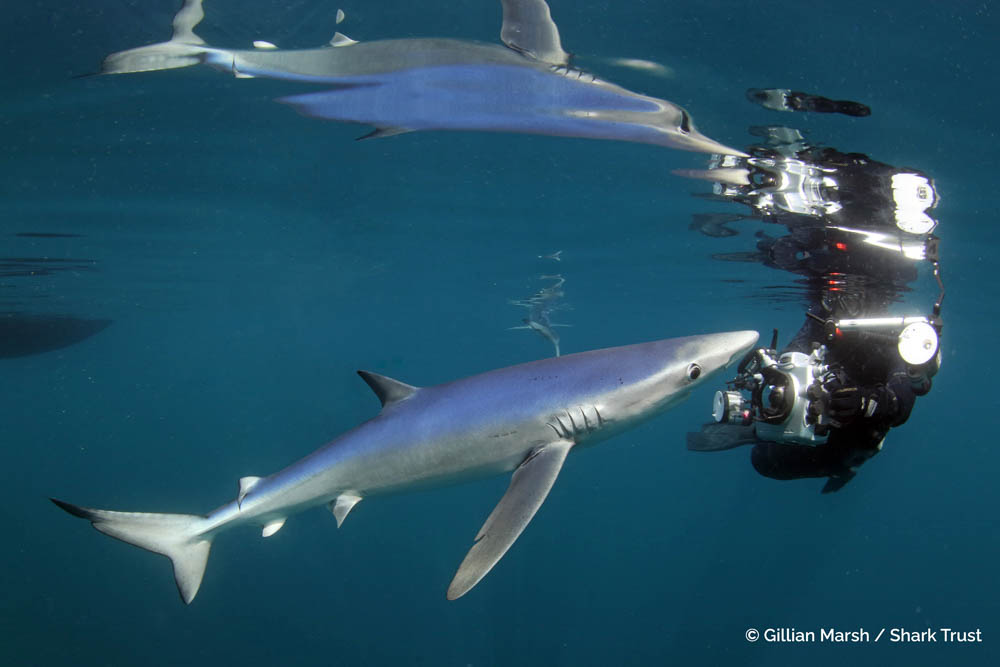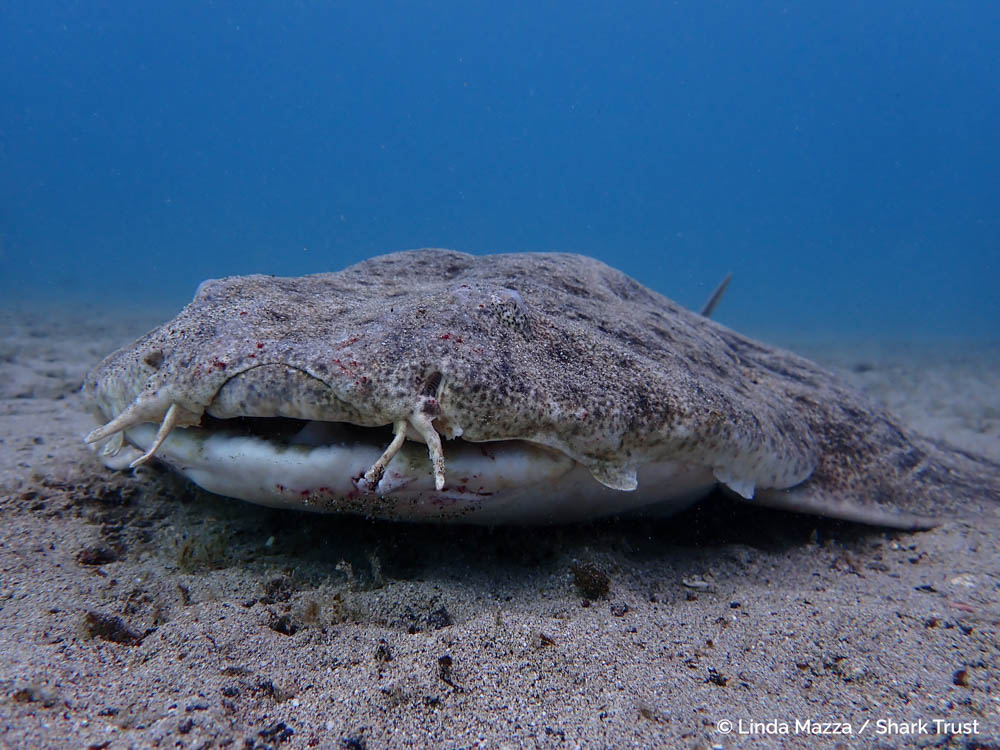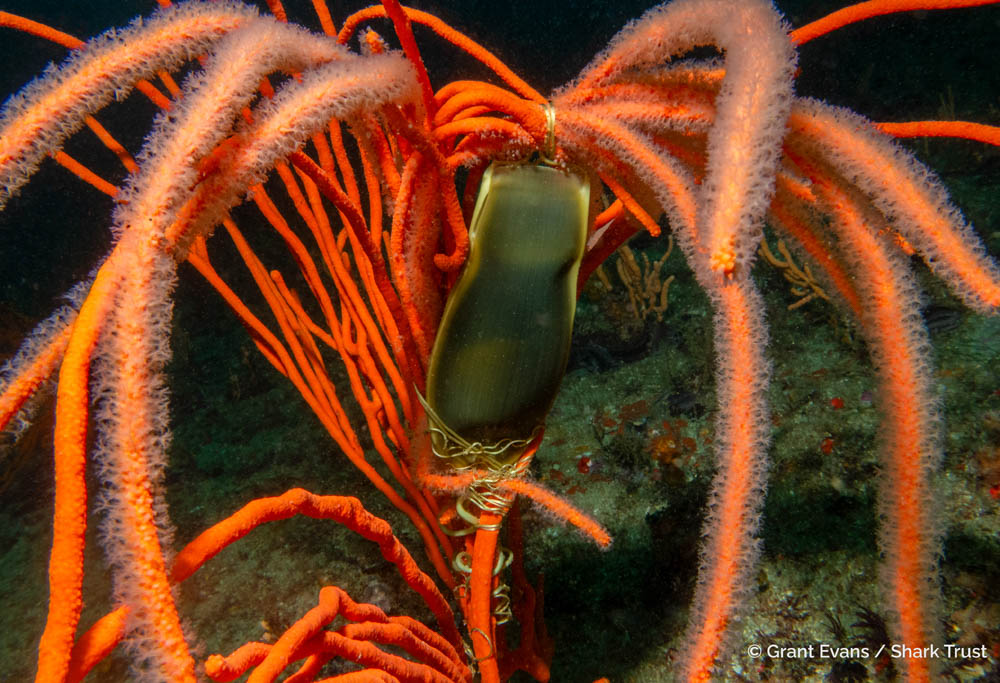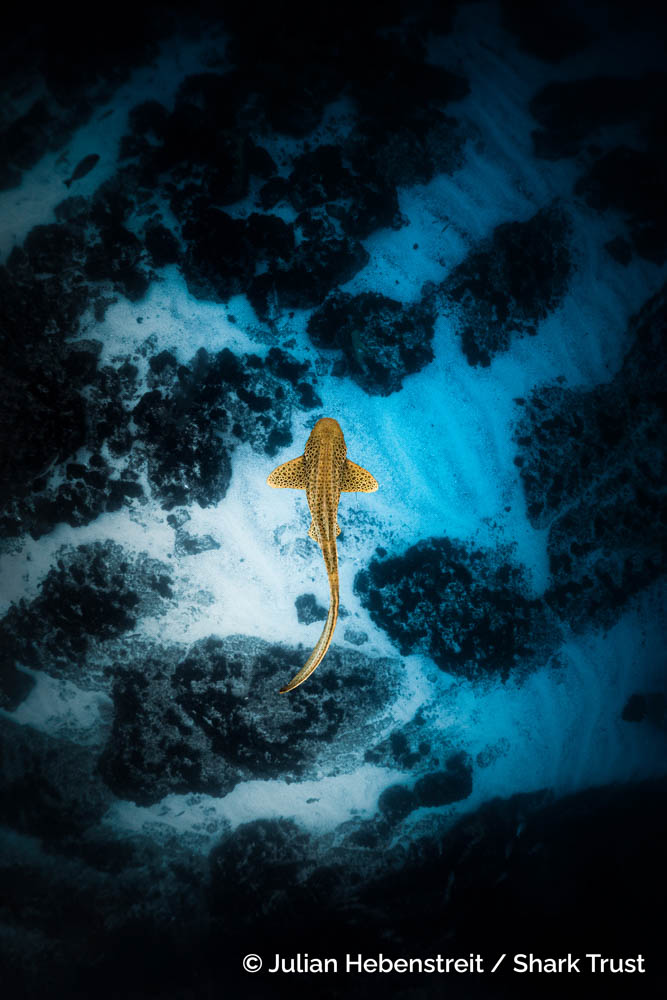Today, on Shark Awareness Day, the Shark Trust have announced the winners of its 2025 Shark Photographer of the Year Competition.
Entries came in from 34 countries and represented 76 different species of shark, ray, skate and chimera. An exhibition of the finalists’ images is currently on display in Plymouth, the home of the Shark Trust. They’ll remain there until the end of the month as part of the Shark Month celebrations going on in Britain’s Ocean City.
The 14th of July, Shark Awareness Day, is a day to celebrate the over 1200 different species of shark and ray found in our ocean. And the submitted photographs in the Shark Trust competition did just that. From Australia to Scotland, from South Africa to The Bahamas, sharks and rays of all shapes and sizes have been beautifully photographed and submitted. From rarely seen chimera to the unmistakeable Critically Endangered Great Hammerhead Shark.
The highest accolade in this year’s competition, Shark Photographer of the Year 2025, has been awarded to Julian Hebenstreit for his stunning shot of an IndoPacific Leopard Shark (also known as a Zebra Shark) in Australia.
Simon Rogerson, Shark Trust Patron and one of a trio of judges that had the tough job of selecting the winners, said “This photograph is at first glance quite simple, but with a depth that rewards repeated views. The golden form of the Indo-Pacific Leopard shark stands in vivid contrast to the dark rock and the white sand. Placing it small in the frame creates a sense of drama rather than distance. For me, it suggests the precarious existence of our remaining sharks, this golden species representing treasure in dark times.”
Julian has won a package of accommodation and shark diving in The Bahamas courtesy of Diverse Travel and The Bahamas Ministry of Tourism. He also receives the Shark Trust Shark Photographer of the Year 2025 trophy.
Paul Cox, Shark Trust CEO, said “The highlight of the photography competition for me is the wonderful diversity of sharks and rays represented and the quality of images across the board. We’re grateful to each and every one of the photographers for taking part and sharing their love of sharks with the world.”
The judges picked out a further two outstanding images as the British and Overseas Winners. These awards went to Hector Clarke and Martin Broen respectively. They received Mares dive computers in addition to their trophies.
Hector’s image of Small Spotter Catshark lying on a mass of brittle stars in Loch Carron, Scotland highlights just why our seabed is so important to many species, including sharks and rays. Hector said “I found this individual resting on a bed of brittle starfish at around twenty metres depth. It seemed very comfortable with my presence, allowing me to get exceptionally close. I like how this image captures the density and diversity of life in this area, all the way from the multicoloured brittle stars to the exquisitely patterned catshark.”
Martin’s shot is an eye-catching split-shot. Where the camera captures subjects both above and below the water. Is depicts the mobular ray migration in Mexico in dramatic black and white. Martin said: “Below the surface, a dense school of rays forms a luminous, geometric ballet, their bodies catching shafts of sunlight filtering through the ocean. Above, a small boat with observers floats quietly, a silent witness to one of nature’s most graceful spectacles.”
Sharks have been in our ocean for over 400 million years. Now, the survival of many species is in danger. This extinction crisis is avoidable if we act to address the primary threat: overfishing. The Shark Trust works globally to improve the conservation status of sharks, skates and rays. Advocating for policy changes. And generating collective action to support our goals.
To reflect the Shark Trust’s current projects in shark and ray conservation, additional accolades were awarded to those that entered images that closely align with their programmes.
Oceanics Programme
The Oceanics Programme is a wide-ranging advocacy effort which targets the conservation of oceanic sharks and rays. Oceanic sharks are some of the most iconic and functionally important species in our ocean. They are exceptionally threatened by overfishing and urgent action is required to ensure their long-term sustainability.
The winner of this category, Byron Conway, captured Silky Sharks at the surface in Cuba. He said “To tell the story of these sharks I used a slow shutter speed to get some natural movement into the image. This also allowed me to use Snell’s window at sunset to burn in some beautiful colours from the sunset above and show the relationship these sharks have with the surface. A memorable experience, amongst the best large animal encounters I have had.”
Living with Sharks
Living with Sharks is a new cross-disciplinary project which seeks to identify emerging issues and co-create equitable solutions with affected communities. It will focus on three main groups: beachgoers, recreational anglers and those taking part in shark and ray eco-tourism activities such as scuba diving or snorkeling.
The winning image, by Gillian Marsh, shows a Blue Shark off the coast of Cornwall with an underwater photographer. She said “The blue sharks were bold and curious, and we four snorkelers had a lot of good interactions with them, but I particularly like the interaction in this image. It’s tempting to imagine the shark is asking the photographer “Have you got my best side?”
Mediterranean Programme
The Mediterranean Sea is a hotspot of extinction risk for sharks and rays. A complex body of water home to nearly 80 species of shark and ray, of which at least 53% are at risk of extinction. Surrounded by 22 different countries across 3 continents, and home to over 77,000 small boats, the Mediterranean Sea is subject to a broad range of diverse fisheries pressures. Working through a network of regional partners, the Mediterranean Programme spans policy engagement, species-specific recovery programmes, and community engagement.
The winner of this category, Linda Mazza, did not actually capture her image in the Mediterranean Sea. But there is a poignant reason for this. Finding Critically Endangered Angelsharks is now very difficult. Perhaps the Canary Islands, where sightings are more common, can champion protecting them.
Linda said “This raw portrayal highlights not only their vulnerability but also their misunderstood nature in an increasingly threatened ocean. For me, this photo breaks the usual barrier between viewer and shark. It creates an unexpected intimacy.”
Great Eggcase Hunt
The Great Eggcase Hunt is the flagship citizen science project from the Shark Trust. It not only asks people walking beaches around the world to search for empty eggcases washed ashore, but also divers and snorkellers to look out for live, developing eggcases underwater. These are perhaps the most valuable sightings that we receive as they reveal exactly where sharks and skates lay their eggs. This improves our understanding of which areas are critical habitat.
The winner of this category is Grant Evans with a shot of a Pyjama Shark eggcase in South Africa. He said “I took this picture as I found it a curious sight, and it is important to acknowledge the sharks’ life stages before it is a fully formed shark that is so often seen gliding through the nearby kelp forests. It also highlights the importance of the sea floor for these animals, as they need these sea fans to secure their egg cases safely. Bottom trawling threatens these corals and the egg depositing sites of catsharks in South Africa.”
Young Shark Photographer of the Year
And finally, the Young Shark Photographer of the Year 2025 was awarded to Panitbhand Paribatra Na Ayudhya for his image of a Whale Shark feeding at the surface. He said “I was very excited to see with my own eyes the largest fish in the world feeding on some of the smallest living creatures in the ocean. For me, enjoying this moment is not all there is, we must take action to help ensure these incredible, gentle giants of the sea survive. I believe that together we can help Whale Sharks live and swim freely in their ocean home, allowing them to share this planet with us for years to come.”
All the images will be put to good use to support shark and ray conservation efforts for years to come. Which makes each and every image entered into the competition incredibly valuable to this diverse and important group of animals, many of which of globally threatened.
The Shark Trust would like to thank all the photographers that took part. And the sponsors of the competition: Diverse Travel, The Ministry of The Bahamas; Mares; Sea Change Wine; Astralis Print and Design, Scapa Joe, In Deep Diving Centre, Haven Diving Services.
THE SCUBA NEWS Link !
DemirHindiSG 14 Temmuz 2025-07:05



